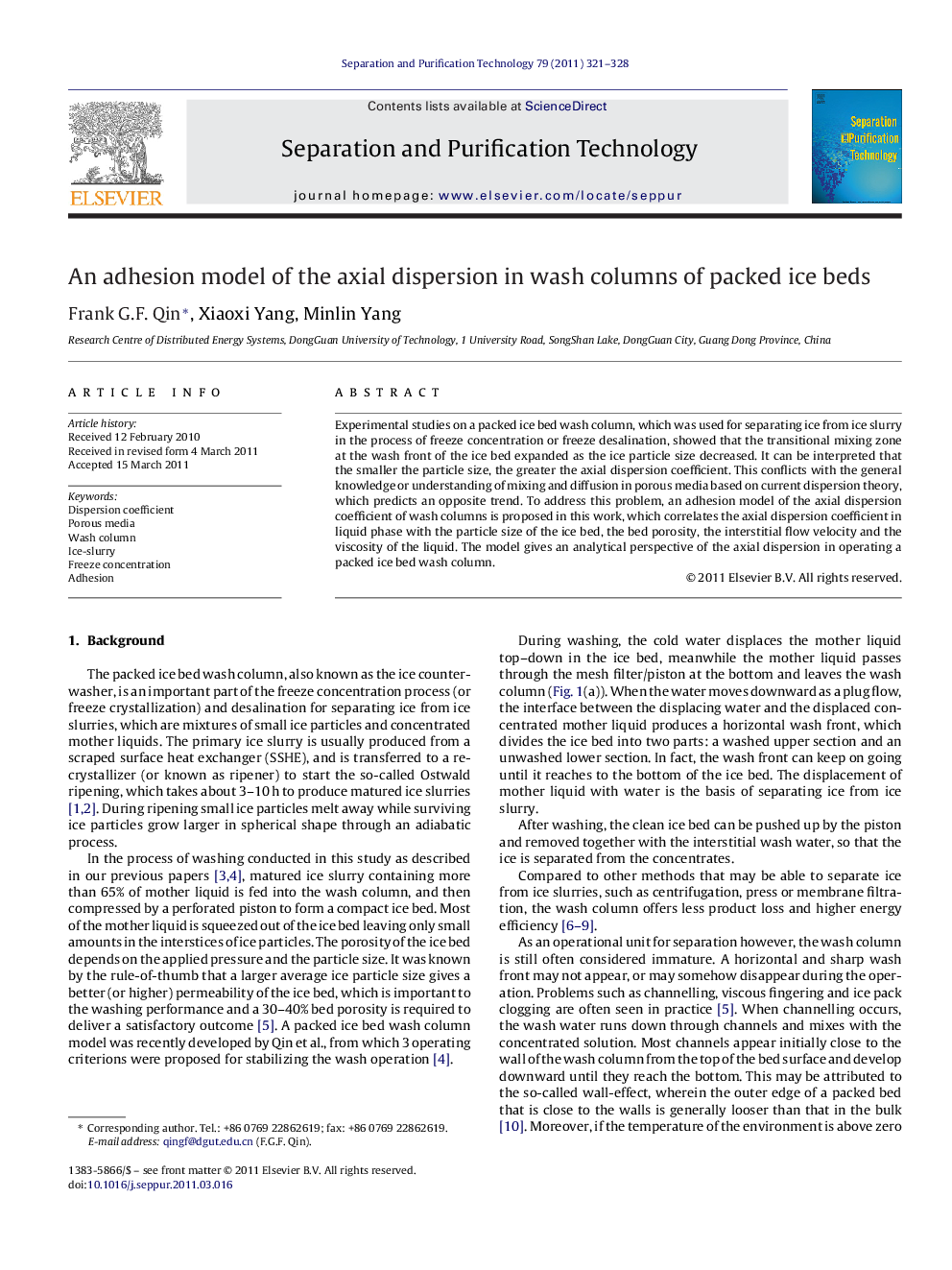| Article ID | Journal | Published Year | Pages | File Type |
|---|---|---|---|---|
| 642705 | Separation and Purification Technology | 2011 | 8 Pages |
Experimental studies on a packed ice bed wash column, which was used for separating ice from ice slurry in the process of freeze concentration or freeze desalination, showed that the transitional mixing zone at the wash front of the ice bed expanded as the ice particle size decreased. It can be interpreted that the smaller the particle size, the greater the axial dispersion coefficient. This conflicts with the general knowledge or understanding of mixing and diffusion in porous media based on current dispersion theory, which predicts an opposite trend. To address this problem, an adhesion model of the axial dispersion coefficient of wash columns is proposed in this work, which correlates the axial dispersion coefficient in liquid phase with the particle size of the ice bed, the bed porosity, the interstitial flow velocity and the viscosity of the liquid. The model gives an analytical perspective of the axial dispersion in operating a packed ice bed wash column.
► In a packed bed of ice wash column, experiments show that the axial dispersioncoefficient cannot be satisfactorily explained by the current dispersion theories in porous media. ► The mechanism of axial dispersion in packed bed of ice wash columns is analyzed. ► The viscosity of mother liquid and its adhesion on ice particle surface significantly impact the effective axial dispersion coefficient of the packed ice wash column. ► An adhesion model of dispersion coefficient is proposed. ► The model is applied to simulate the change of mixing zone thickness of the wash front.
